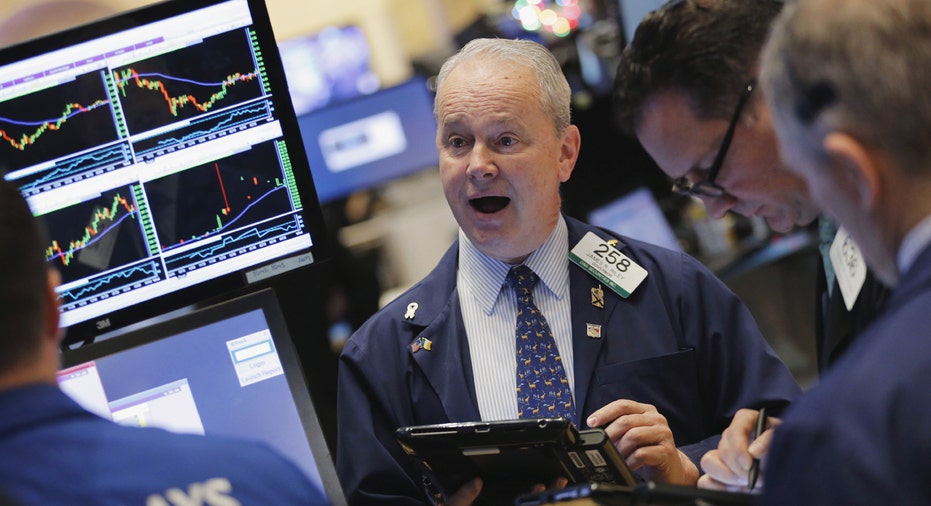Wall Street Sees Biggest Three-Day Gain Since August

U.S. stock markets popped alongside a rally in oil prices as investors cheered comments from Iran on future production.
The Dow Jones Industrial Average was up 257 points, or 1.60% to 16455. The S&P 500 gained 31 points, or 1.66% to 1927, while the Nasdaq Composite added 93 points, or 2.11% to 4529.
Energy and materials led all 10 S&P 500 sectors into positive territory.
Today’s Markets
Wall Street rallied on the back of renewed strength in the oil market on Wednesday after Iran said it would support cooperation among global producers, and any effort to stabilize the market.
In recent action, West Texas Intermediate crude jumped 6.34% to $30.88 a barrel, while Brent, the international benchmark, rallied 7.12% to $34.51 a barrel. Meanwhile, the energy sector jumped 3.8%.
The comments from Iran come a day after four of the world’s biggest producers – Saudi Arabia, Venezuela, Russia, and Qatar – said they would cap their production rates at January levels. The move on Tuesday had underwhelmed Wall Street, which had for weeks expected producers to engage in output cuts in an effort to bring more stability to the oil market and alleviate massive oversupply.
“The major producing countries are beginning to at least address the supply/demand imbalance and this is helping sentiment,” Larry Shover, chief investment strategist at Solutions Fund Group, said. “For all the posturing, this is a clear indication that low prices are creating significant pain across the producing world.”
Iran and Iraq – two nations where substantial increases are most likely to happen this year – have been eyed as the biggest holdouts on production cuts. On Wednesday, Iran appeared to toe the line carefully following a meeting between Iran’s oil minister and those of Iraq, Qatar, and Venezuela. Reuters reported Iran’s OPEC envoy was quoted by the Shargh daily newspaper as saying “asking Iran to freeze its oil production level is illogical…when Iran was under sanctions, some countries raised their output and they caused the drop in oil prices.”
Iran has been hesitant to agree to altering output plans so far this year as it seeks to regain market share now open to it after international sanctions were lifted in late 2015.
IG market analyst Alastair McCaig said in a note slashing output levels is still too much to ask until the OPEC heavyweights throw their support behind the effort 100%.
“Oil traders remain skeptical because until Saudi Arabia is pushing for these changes, rather than reluctantly agreeing, it’s difficult to see the supply/demand balance being meaningfully addressed,” he said.
Back at home, traders in the U.S. parsed mixed economic data releases and talk from central bankers as the minutes from the January Federal Open Market Committee meeting were set for release at 2:00 p.m.
January data from the Labor Department showed producer prices rose 0.1%, better than expectations, for a 0.2% decline. Excluding the volatile food and energy components, prices rose 0.4%, also better than forecasts for a 0.1% rise.
Data on the housing market from the Commerce Department showed starts of new home construction in the first month of the year dropped 3.8% to an annualized rate of 1.10 million units. That was well below expectations for 1.17 million units. Permits, meanwhile, slid 0.2% during the month to an annualized rate of 1.20 million units, matching forecasts.
Aside from the mixed data on the U.S. economy, Dennis DeBusschere, senior managing director at Evercore ISI, said part of the reason for the positive momentum in global equity markets is worries of a U.S. recession have eased as fears about global central banks adopting negative interest rates have also subsided.
“The S&P 500 has rallied recently as rate-hike expectations have increased, presumably as the odds of a U.S. recession have declined and the chance that the Fed adopts negative interest rate policy has diminished as well. An economy improving enough to justify rate hikes and not additional monetary policy support is the easiest path to higher equity prices,” he explained.
Though lagging, traders parsed minutes from the January FOMC meeting, and which gave deeper insight into the reason the central bank held off on hiking rates at the beginning of the year. Minutes showed members feared tighter financial conditions globally could hit the U.S. economy. Still, they expected the U.S. to expand at a moderate pace through the duration of 2016 as inflation remained “somewhat more uncertain.”
Janet Yellen, in Congressional testimony last week, stated that part of the decision had to do with extreme market volatility at 2016’s outset, and concerns over the stability of the global economy.
In recent action, the yield on the benchmark 10-year U.S. Treasury bond rose 0.037 percentage point to 1.814%. Yields move inversely to prices. Meanwhile, gold prices flat rose 0.19% to $1,210 a troy ounce as traders continued to move into more risky assets like equities.
The U.S. dollar traded 0.08% lower against a basket of global currencies.



















